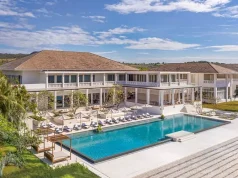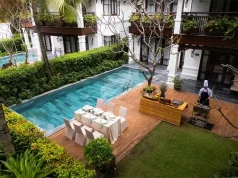
Ride & Seek is delighted to announce that it has acquired Cycle Japan, a leading Japanese bike tour operator founded by Australian adventurer, John Morrell. Ride & Seek has worked closely with Morrell since its first tour on Shikoku Island in 2018. In September and October of 2023, Ride & Seek is offering a NEW extended Samurai Tour that covers Shikoku Island, Noto & Mt. Fuji. The first two legs are sold out, but the 15-day Mt. Fuji stage of the tour, which travels through the Japanese Alps, to the shores of the Pacific, still has availability and starts at $9,700. Throughout the tour, guests will stay in a mix of Western-style hotels and traditional Japanese inns, known as Ryokans. Most of them have natural hot spring baths, perfect for relaxing your muscles after a day of exhilarating cycling. For more info, visit https://www.rideandseek.com/tour/samurai-shikoku-island-japan/.
“Japan was an instant favorite for us, and all the guests that have joined us there to date,” said Ride & Seek founder Dylan Reynolds. ” We are thrilled to take on the mantel of Cycle Japan. Next year, with the help of our new partners, we will be expanding into self-guided tours with a focus on Hokkaido.”
Highlights of Mt. Fuji Tour:
- Bike across Japan from North to South, exploring historic landmarks like the Black Crow Castle in Matsumoto, Japan’s oldest original castle.
- Cycle around Mt. Fuji, experiencing incredible views of this iconic Japanese mountain from the Fuji 5 Lakes, with the option of riding up the volcano.
- Explore the Izu Peninsula, passing through fishing villages, with Mt. Fuji visible from the shores of the Pacific Ocean.
- Ride past the site where the famous American Black Ships landed, a catalyst for ending feudalism and starting Japan’s rapid modernization during the samurai era.
- Experience diverse landscapes and cultural highlights throughout the Alps that have sheltered much of Japan’s ancient history, on this epic cycling tour across Japan.
“The Japanese Alps, with its heavy winter snowfalls, prevented some villages from modernizing and they are frozen in time,” said Reynolds. “These ancient villages are now UNESCO protected and allow us to see how life was lived for hundreds of years and the architecture that made life in such a challenging environment not only possible but highly productive and comfortable.”





